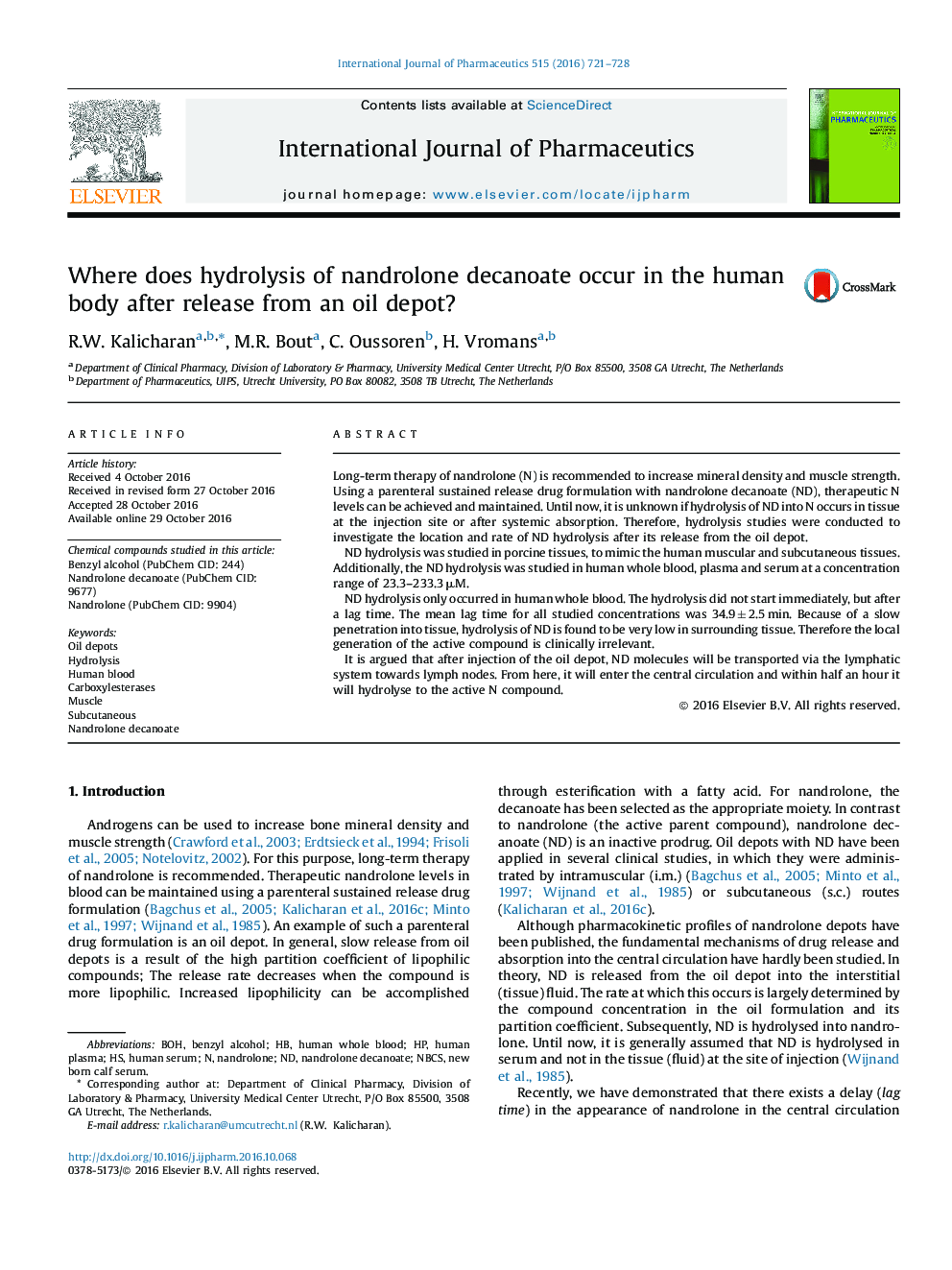| Article ID | Journal | Published Year | Pages | File Type |
|---|---|---|---|---|
| 5550879 | International Journal of Pharmaceutics | 2016 | 8 Pages |
Long-term therapy of nandrolone (N) is recommended to increase mineral density and muscle strength. Using a parenteral sustained release drug formulation with nandrolone decanoate (ND), therapeutic N levels can be achieved and maintained. Until now, it is unknown if hydrolysis of ND into N occurs in tissue at the injection site or after systemic absorption. Therefore, hydrolysis studies were conducted to investigate the location and rate of ND hydrolysis after its release from the oil depot.ND hydrolysis was studied in porcine tissues, to mimic the human muscular and subcutaneous tissues. Additionally, the ND hydrolysis was studied in human whole blood, plasma and serum at a concentration range of 23.3-233.3 μM.ND hydrolysis only occurred in human whole blood. The hydrolysis did not start immediately, but after a lag time. The mean lag time for all studied concentrations was 34.9 ± 2.5 min. Because of a slow penetration into tissue, hydrolysis of ND is found to be very low in surrounding tissue. Therefore the local generation of the active compound is clinically irrelevant.It is argued that after injection of the oil depot, ND molecules will be transported via the lymphatic system towards lymph nodes. From here, it will enter the central circulation and within half an hour it will hydrolyse to the active N compound.
Graphical abstractDownload high-res image (85KB)Download full-size image
